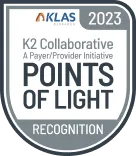Webinar
/
Round Table 153: Mastering Upcoming 2023 E-M Changes!
Date
Time
December 13, 2022
10:00 am
EST
Meet the speakers
About the webinar
See a detailed review of the 2023 Evaluation and Management guideline changes and new codes related to hospital services.

Achieve your boldest ambitions
Explore how Datavant can be your health data logistics partner.
Contact us



.svg)









